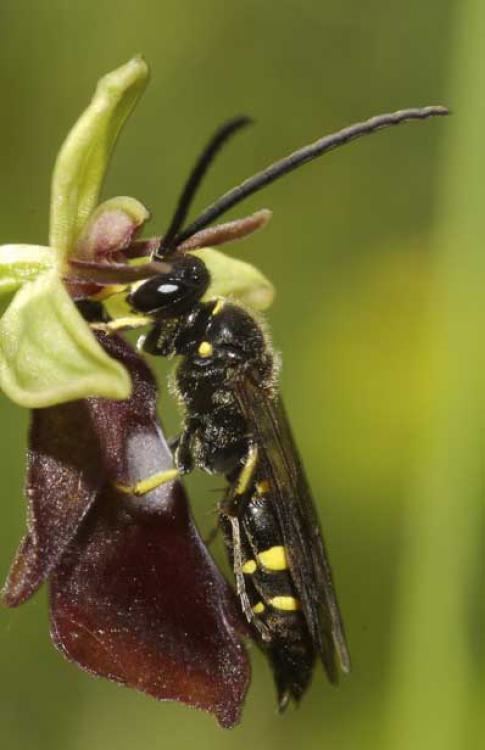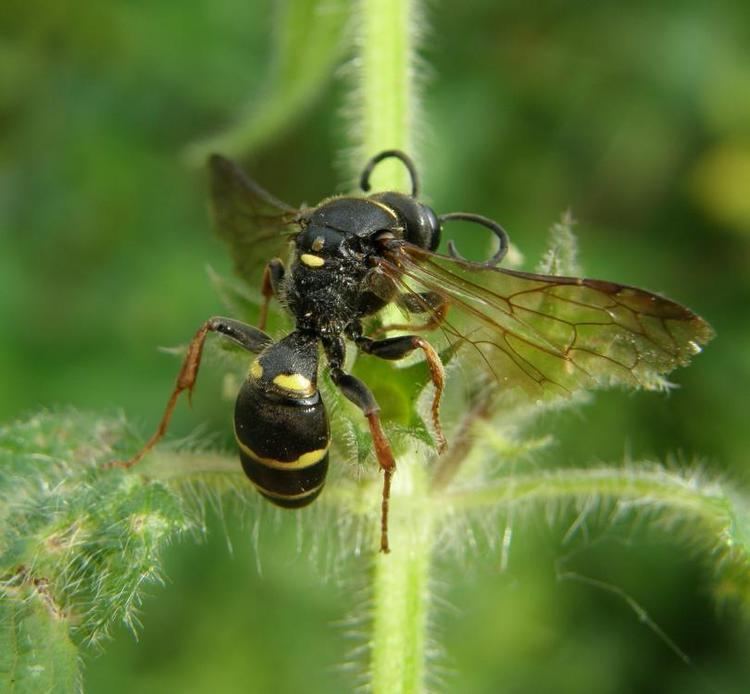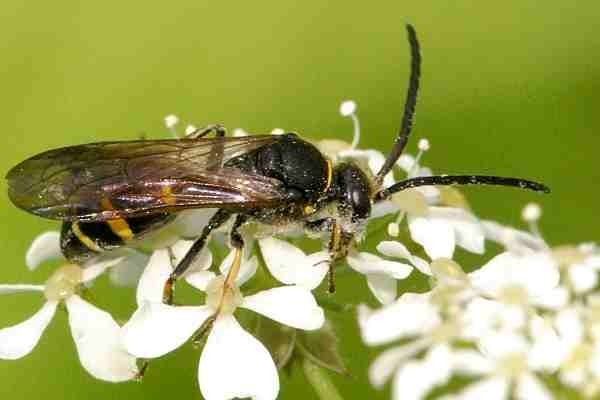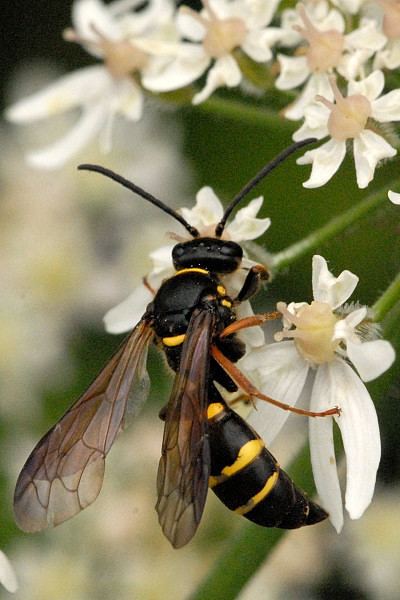Higher classification Argogorytes Order Hymenopterans | Superfamily Apoidea Genus Argogorytes Rank Species | |
 | ||
Similar Argogorytes, Insect, Hymenopterans, Crabronidae, Gorytes | ||
Gravehvepsen argogorytes mystaceus og ophrys insectifiera
Argogorytes mystaceus is a species of solitary wasp in the family Crabronidae.
Contents
- Gravehvepsen argogorytes mystaceus og ophrys insectifiera
- Argogorytes mystaceus vosilka m men
- Distribution
- Habitat
- Description
- Biology
- References
Argogorytes mystaceus vosilka m men
Distribution
This species is present in most of European countries and in Siberia, Japan, Korea, China, Turkey.
Habitat

These wasps prefer deciduous woodland and hedge rows with sandy soil in sunny mountain areas with abundant flowering plants, at an elevation of over 1,000 metres (3,300 ft) above sea level.
Description

Argogorytes mystaceus can reach a length of 10–14 millimetres (0.39–0.55 in) in females, of 8–11 millimetres (0.31–0.43 in) in males. These medium-sized wasps have a black abdomen with a few yellow stripes and no petiole. In males antennae are very long. Mesothorax and scutellum are black. Legs are pale yellowish brown, with a black base.
Biology

Females of Argogorytes mystaceus usually visit Apiaceae flowers, wood spurge and honeydew on sweet chestnut leaves. Males are known to be pollinator of the flowers of fly orchids (mainly Ophrys insectifera). The males of this species try to copulate (pseudocopulation) with these specialized flowers, that mimic (pouyannian mimicry) the shape and the scent of the females, with the purpose of deceiving them and thereby pollinate the flowers.

These solitary wasps nest in soil in dry banks. Larvae feed on larvae of small leafhoppers and spittlebugs (mainly Philaenus and Aphrophora species). They fly in one generation from mid-May to mid-August. Among their natural enemies there are parasitoid wasps (especially Ichneumonidae larvae) and nest parasites (Nysson spinosus).

